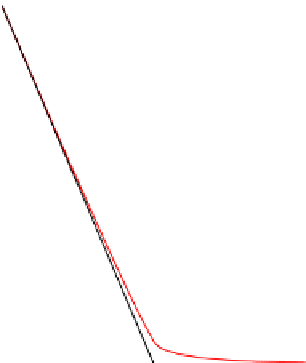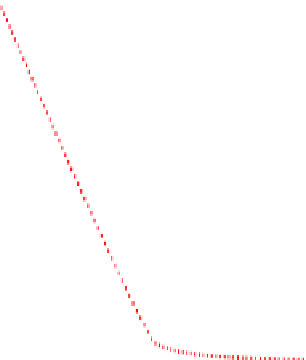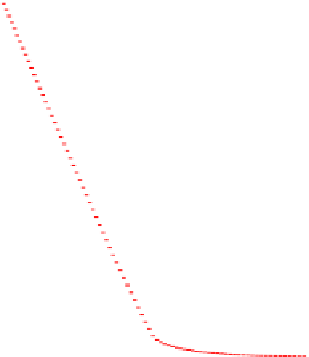Information Technology Reference
In-Depth Information
Fig. 10.4
Loss of the smooth pasting condition, CGMY model with
μ
≈−
0
.
0018,
C
=
0
.
5,
G
=
5,
M
=
5
.
4,
Y
=
0
.
1,
r
=
0
.
13 (
left
) and CGMY model with
μ
≈
0
.
0478,
C
=
1,
G
=
6,
M
=
5
.
4,
Y
=
0
.
1,
r
=
0
.
01 (
right
)and
h
=
0
.
01 in both cases
For American style contracts on underlyings whose log-returns are described
by pure jump Lévy models, the analytic behavior of the American put price and
the free exercise boundary can be considerably more involved than in the Black-
Scholes model. For prices of American style contracts on underlyings modeled by
pure jump Lévy processes, it is shown in [111, Theorem 4.2] that the smooth pasting
principle fails for admissible market models if the model is of finite variation and
μ
=
(e
z
0. The smooth pasting principle holds for admissible
market models (in particular, for pure jump models) of infinite variation and for pure
jump Lévy models of finite variation which satisfy
−
1
)
+
ν(
d
z)
−
r
≤
R
μ
=
R
(e
z
r>
0,
see [111, Theorem 4.1] and Fig.
10.4
. For an admissible market model, the free
boundary
t
−
1
)ν(
d
z)
−
s
∗
(t)
satisfies
s
∗
(t) >
0for
t
0
,T)
and is a continuous mapping
[110, Proposition 4.1 and Theorem 4.2]. We get the following result:
→
∈[
s
∗
(t)
lim
=
K
for
μ
≤
0
,
t
→
T
s
∗
(t)
K
∗
lim
=
for
μ>
0
,
t
→
T
where
K
∗
<K
. Note that
μ>
0 holds for all infinite variation market models, and
hence there is an instant jump of the exercise boundary from the strike price
K
to
K
∗
. We refer to [110, Theorem 4.4] for a proof. The early exercise of an American
put if the interest rate is zero is not optimal, i.e. for the free boundary we have
s
∗
(T )
→
0for
r
→
0[110, Remark 4.7].








































































































































Search WWH ::

Custom Search